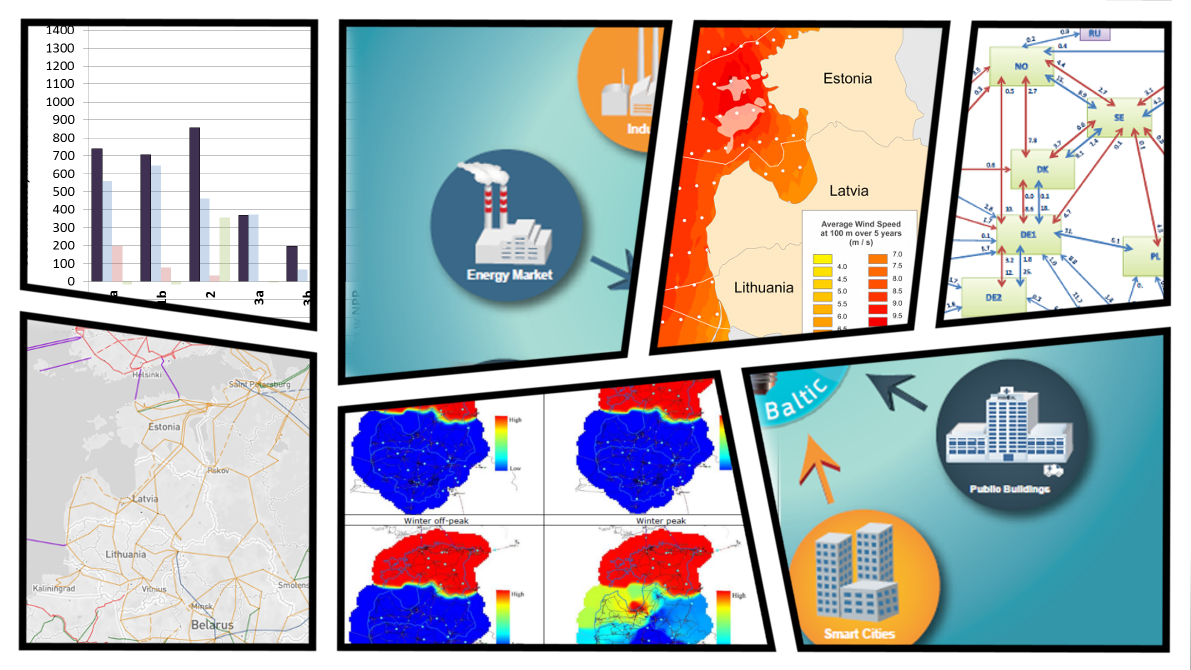
The energy policy of the Baltic States is integrated in the energy strategy of the European Union for secure, competitive and sustainable energy. Energy security and energy independence targets in the EU trigger seeking for alternative power sources for the Baltic area. Full integration into the European grid and market is a priority for the Baltic States.
Our role
Against this background, we
- address several technical, economic and social issues relating to the Baltic power system and market developments.
- inform, with our technical and scientific analyses, the policy decision making process in the Baltic area.
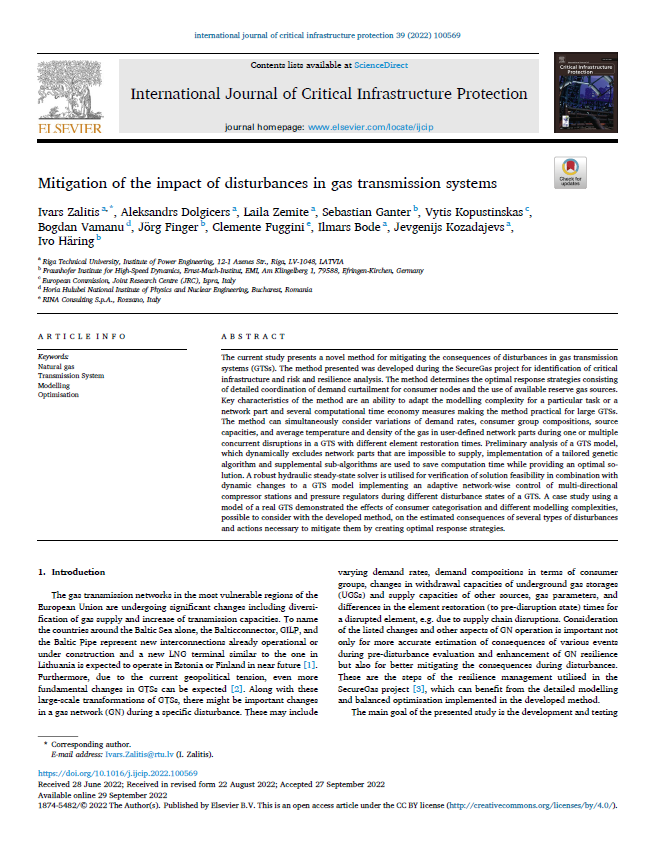
2022 Mitigation of the impact of supply disturbances in gas transmission systems
Development of gas transmission systems (GTSs) and diversification of gas suppliers requires continuous updates on the models of GTS as well as the modelling tools applied including solutions for risk and resilience analysis. The current work presents an algorithm for mitigation of consequences of disruptions in GTS from supply point of view. This objective is achieved by determination of the optimal response strategies consisting of a detailed coordination of load curtailment for consumer nodes and the use of reserve gas sources when necessary. The load curtailment is based on a consumer categorisation defined in the Latvian legal framework applied during energy crisis and implemented utilising penalty (cost) coefficients, optimisation and hydraulic steady-state simulations for verification of different solutions. The developed algorithm is capable to consider various changes in GTS, such as different demand rates and source capacities during the disruption or emergency by dividing the crisis event in time intervals. Another feature of the algorithm is an automatic update of the model to consider operation of multi-directional compressor stations. Finally, several capabilities of the developed algorithm are demonstrated in a case study using a model of a real GTS with comparisons between simplified and detailed modelling approaches. Results obtained by a case study applying the developed method can be used for an evaluation of GTS resilience considering both current and future network state.
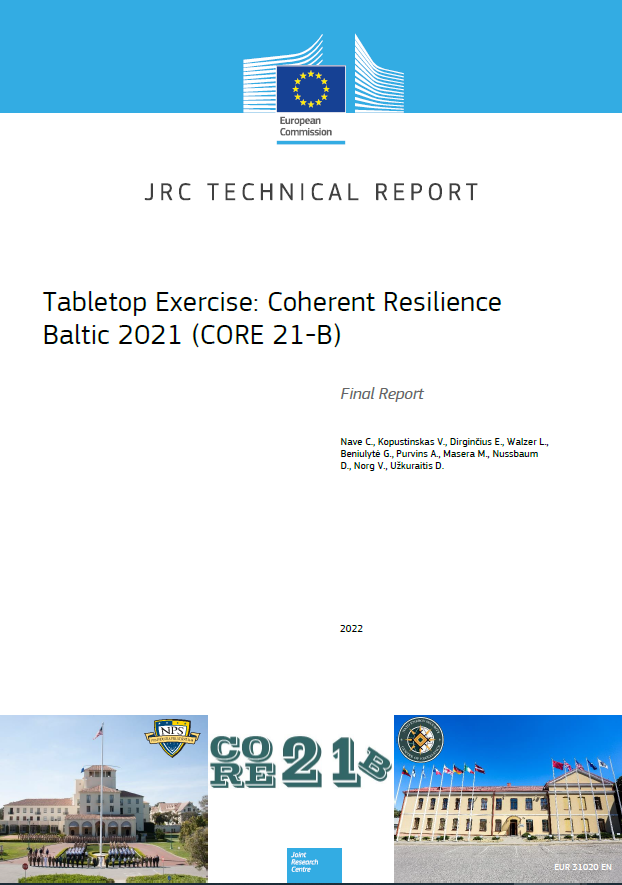
2022 Tabletop exercise: Coherent Resilience 2021 Baltic (CORE21-B)
Coherent Resilience 2021 – Baltic (CORE 21-B) was a Tabletop Exercise (TTX) on the Baltic States and hybrid threats to the regional electric grid with a focus on critical energy infrastructure protection. The TTX took place 20-24 September 2021 in Vilnius, Lithuania. The aim of the exercise was to support the national authorities and electricity system operators of the Baltic States in ensuring supply of electricity to civilian and military consumers and mitigating the possible disruption in the light of hybrid threats over the Baltic region due to vulnerabilities caused by close proximity of unsafe Belarusian NPP and the process of synchronization of the Baltic States power grid with the Continental Europe grid. CORE 21-B was a five-day regional, multilateral, interagency, and public-private sector event that was executed with an academic seminar, a three-day TTX, and a distinguished visitors’ day that included after-action briefings. This report focuses largely on syndicate responses to the exercise scenario vignettes and injects to include capturing key takeaways and recommendations. The event brought together over 100 participants from 12 NATO and European Union countries or partner nations, who came from 35 different organizations representing electricity supply and energy security stakeholders.
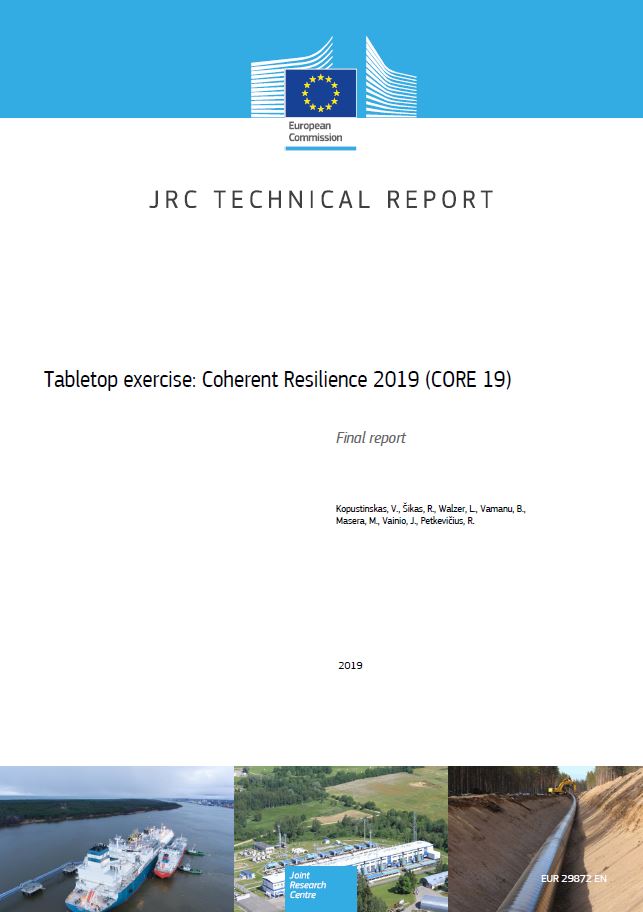
2019 Tabletop exercise: Coherent Resilience 2019 (CORE 19)
Coherent Resilience 2019 (CORE 19) was a Tabletop Exercise (TTX) on the Baltic States and hybrid threats related to regional gas supplies and critical energy infrastructure protection. The TTX took place 14-16 May 2019 in Vilnius, Lithuania. The goal of the exercise was to support the national authorities and gas transmission system operators (TSO) of the Baltic States in ensuring supply of gas to consumers and mitigating the disruption over the Baltic region. This three-day regional, multilateral, interagency, and public-private sector event was divided into three phases including an academic seminar, a two-day TTX, and a distinguished visitors’ day that included after-action briefings. This report focuses largely on syndicate responses to the exercise scenario vignettes and injects to include capturing areas of improvement, best practices, and recommendations. The event brought together 108 participants from 14 NATO and European Union countries, who represented 35 different governmental organisations representing gas supply and energy security stakeholders.

2017 - Integration of the Baltic States into the EU electricity system - A technical and economic analysis
This study (its executive summary can be downloaded here), served as scientific basis for the political discussion among the policy decision makers in the Baltic area - held in the context of the Baltic Energy Market Interconnection Plan (BEMIP) group - on the preferred Baltic-EU power grid synchronisation solution.
Three Baltic-Russia/Belarus power system de-synchronisation scenarios are assessed, looking in particular at alternative conditions of the Baltic power grid in terms of:
(i) no synchronisation with any of the neighbouring systems,
(ii) synchronisation with the Nordic system,
and (iii) synchronisation with the Continental European Network (CEN).
The three scenarios are compared over the 2025 and 2030 horizons. The options diverge due to costs of additional fuel and infrastructure. The third option, Baltic-CEN synchronisation, emerges as the most techno-economically cost-effective.
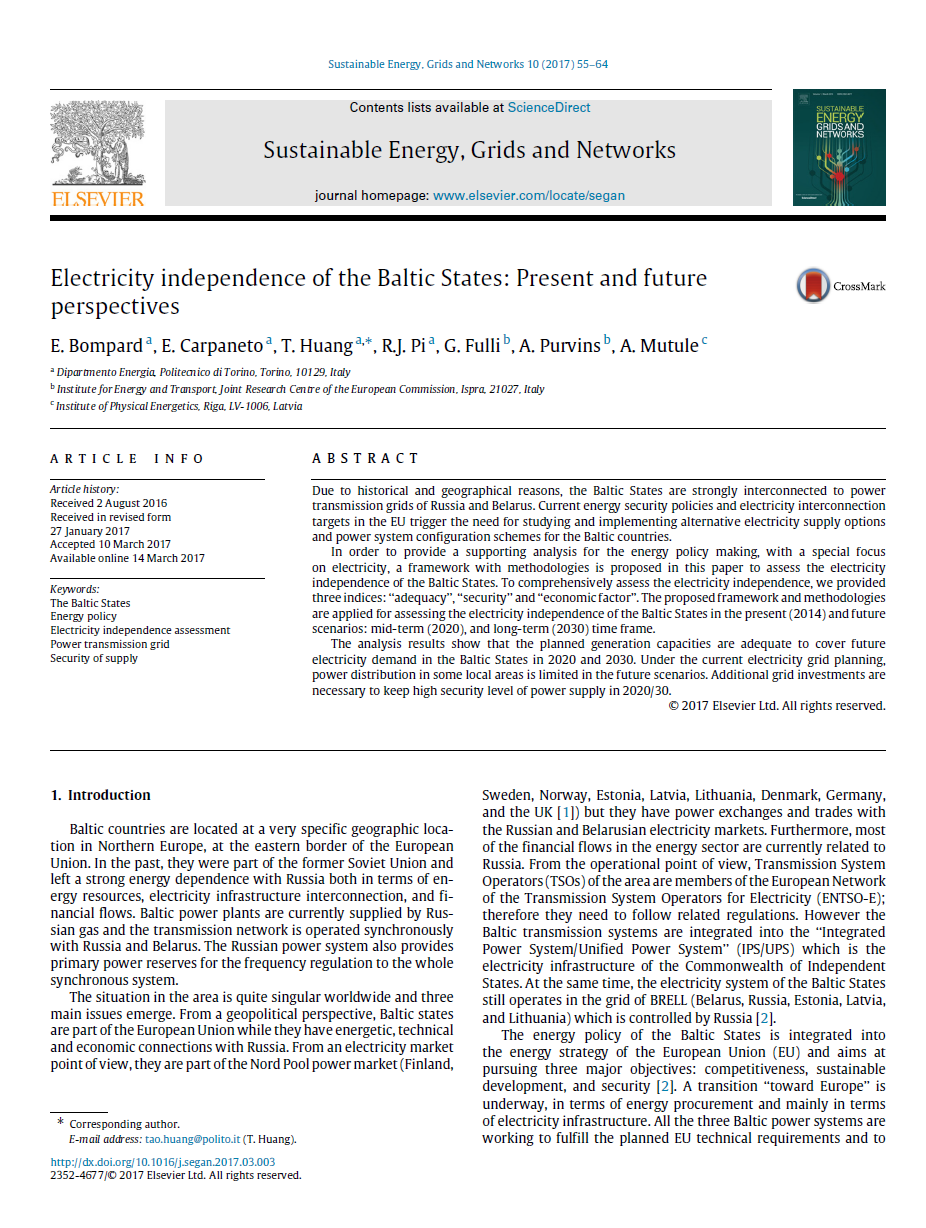
2017 - Multi-criteria selection of offshore wind farms: Case study for the Baltic States
This paper (whose results can be also checked via this interactive map) presents a multi-criteria selection approach for offshore wind sites assessment. The proposed site selection framework takes into consideration the following aspects: electricity network security conditions, economic investments, operation costs and capacity performances relative to each potential site.
The selection decision is made through the Analytic Hierarchy Process (AHP), endowed with an intrinsic flexibility that aims to allow end users to adjust the expected benefits according to their respective and global priorities. The proposed site selection framework is implemented as an interactive case study for three Baltic States in the 2020 time horizon, based on real data and extensive power network models, taking into consideration the foreseen upgrades and network reinforcements.
For each country the optimal offshore wind sites are assessed under multiple weight contribution scenarios, reflecting the characteristics of the market design, the regulatory framework or the renewable integration targets.
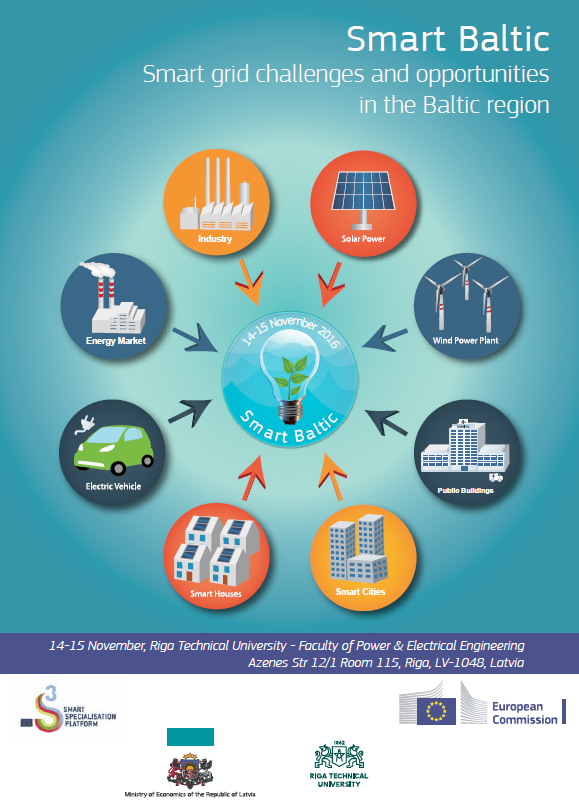
2016 - Smart Grid Challenges and Opportunities in the Baltic Region
This workshop (agenda and presentations are available here) aimed to facilitate an exchange about the implementation of the Smart Specialisation (S3) priorities related to Smart Grids in the Baltic region.
Our team regularly monitors the transition of the EU power network towards future digital grids, observing advances, developing models and making analyses.
The event addressed specific instances of how S3 regions are preparing the ground for smart grid deployment, including interrregional cooperation as a key driver to support S3 implementation and the effective uptake of the Cohesion Policy Funds for smart srids.
The workshop offered an opportunity for the industry, research & innovation sectors, regional authorities and other stakeholders to exchange good practices and innovative concepts supporting S3 and energy policy in the Baltic region. The event was organised by the JRC in the framework of the Smart Specialisation Platform on Energy (S3PEnergy). Close collaboration of the Latvian Ministry of Economic Affairs and the Riga Technical University turned this event into a key step towards interregional cooperation on smart specialisation priorities related to smart grids.
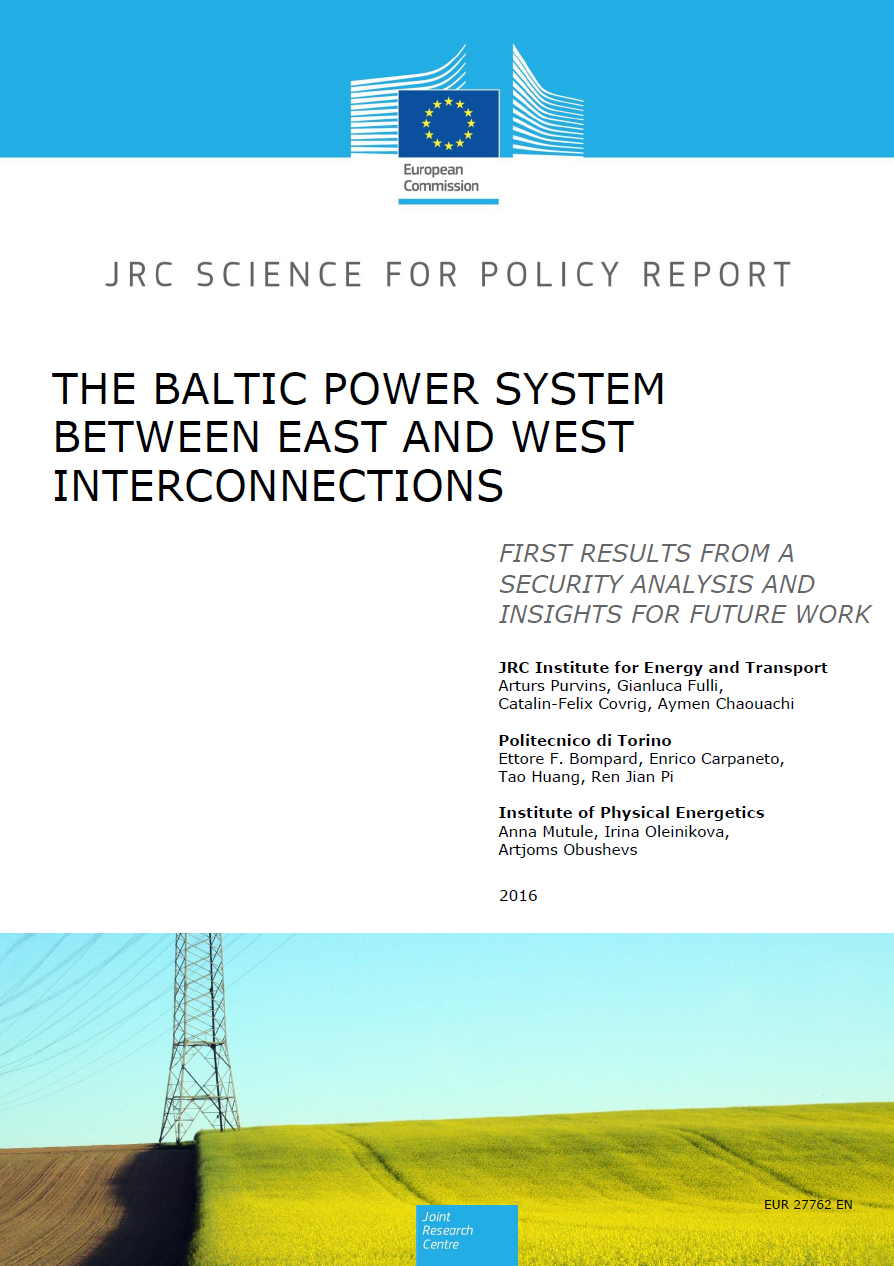
2016 - The Baltic power system between East and West interconnections
This report is based on a power system model of the Baltic States developed with the purpose of assessing comparative options for a reliable and secure development of the Baltic electricity system. The analysis of horizon 2020 and 2030 showed that the dependency of Baltic States on external resources is fairly low, provided that the expansion of the electricity system proceeds as planned.
The study was conducted with the objective of understanding the competitiveness of the three Baltic countries individually, while considering the network infrastructure constraints. To assess options for enhanced energy security, we developed a dedicated power system model covering the 330 kV, 220 kV and 110 kV network and including four scenarios: winter peak, winter off-peak, summer peak and summer off-peak.
The foreseen expansion of electricity generation sources in the Baltic countries will result in fairly low dependence on electricity imports by 2020 and 2030. The report shows that Lithuania's network infrastructure is adequate and can sustain a large quantity of imports. The Latvian power system enjoys more market advantages due to the high ratio of renewable energy (mainly hydro) in its electricity generation mix. Estonia relies on its own fossil oil shale and has the highest installed wind turbine capacity among the three Baltic States, but it does not have enough capacity to ensure the same strategic market position of Latvia. Future nuclear generation in Visaginas can greatly improve security of electricity supply in the Baltic States. Even in its absence, the Baltic States can still count on alternatives for power generation, although with a decreased security margin, if not supplemented by other balancing resources (like cross-border interconnections, storage capacity, demand response).

2015 - Long-term HVDC developments in the European power system: The Baltic case in GridTech analysis
This paper focuses on the planned and potential HVDC developments concerning the Baltic region, paying particular attention to the long-term (2030–2050).
In the field of electric power transmission, HVDC (High Voltage Direct Current) is a well-established technology, presenting characteristics that have made it widely attractive over HVAC (High Voltage Alternating Current) for specific applications. Currently, recent advances in power electronics, coupled with the traditional features of HVDC, are contributing to boost the penetration of HVDC through further applications in the European power system.
To this purpose, after an analysis of the Baltic scenario's evolution, some results derived from the European GridTech project are presented and discussed.
